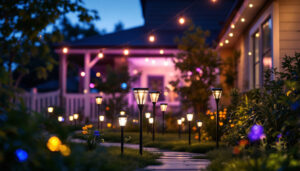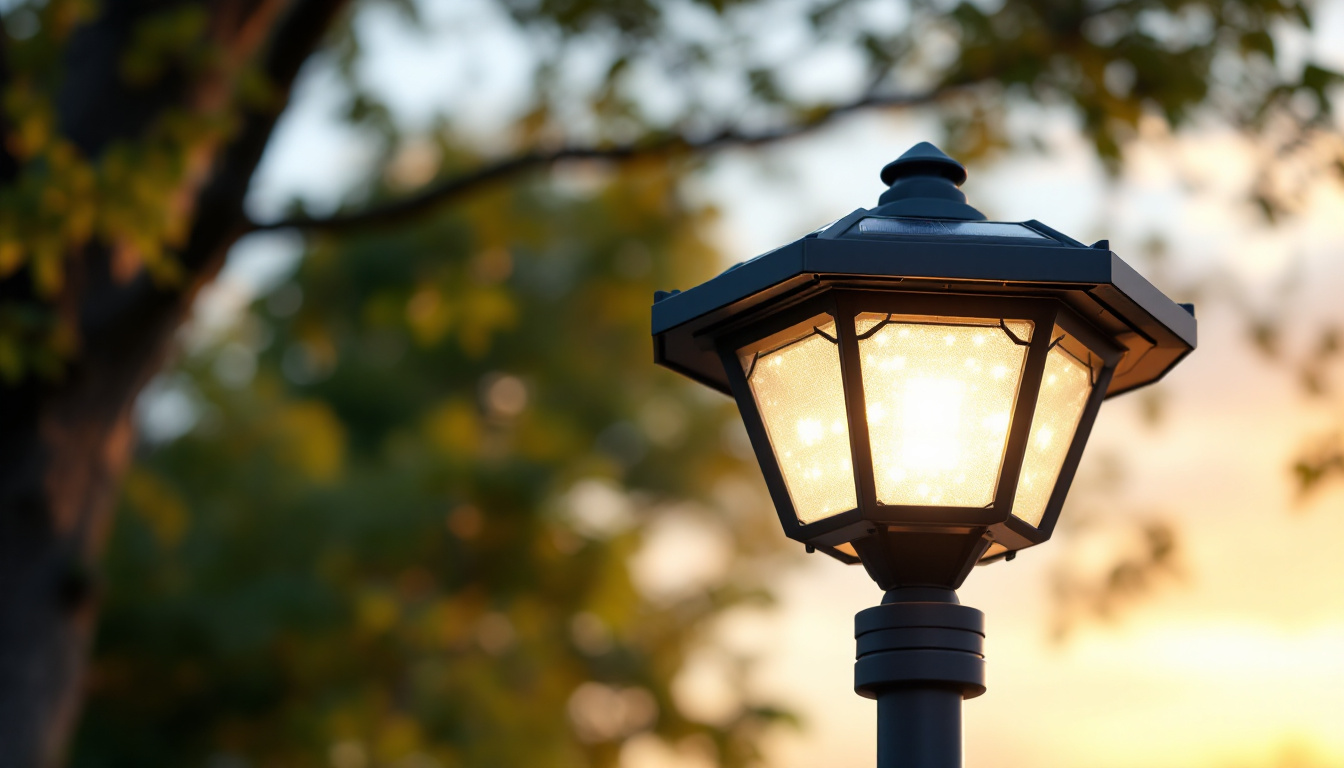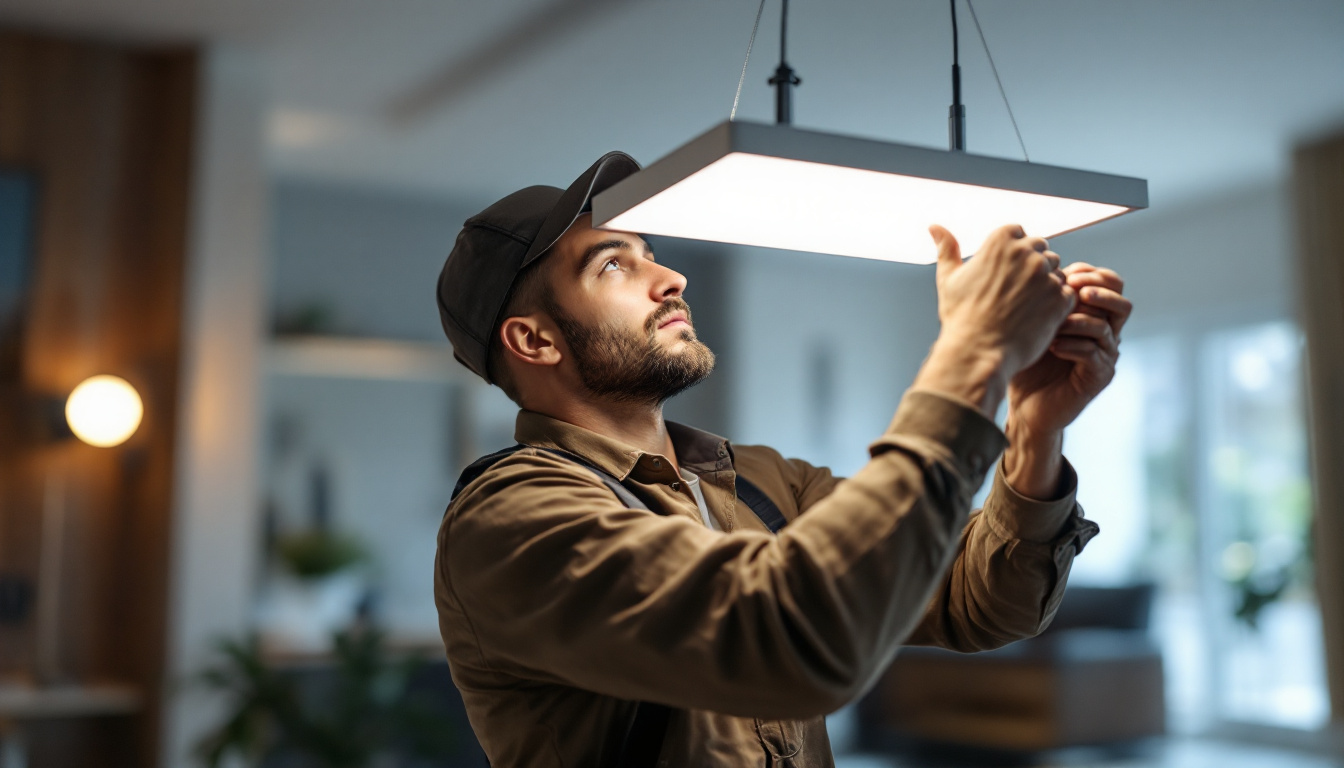

As the demand for sustainable and energy-efficient lighting solutions continues to grow, solar lamps for lamp posts have emerged as a popular choice among lighting contractors. These innovative fixtures not only reduce energy costs but also contribute to environmental conservation. This article delves into the benefits, installation considerations, and design options of solar lamps for lamp posts, providing valuable insights for lighting contractors looking to simplify their projects.
In recent years, there has been a significant shift towards renewable energy sources, with solar lighting becoming a preferred option for many municipalities and private properties. This trend is driven by a combination of environmental concerns, rising energy costs, and advancements in solar technology.
Solar lamps harness the power of the sun, converting sunlight into electricity. This process eliminates the need for fossil fuels, reducing carbon emissions and minimizing the ecological footprint of lighting installations. For contractors, promoting solar lamps can enhance their reputation as environmentally conscious professionals. Additionally, the use of solar lighting can contribute to biodiversity by reducing light pollution, which can disrupt local wildlife and ecosystems. By implementing solar solutions, communities can create a more harmonious relationship with their natural surroundings, fostering a healthier environment for both residents and wildlife alike.
While the initial investment in solar lamps may be higher than traditional lighting options, the long-term savings are substantial. Solar lamps require minimal maintenance, have no ongoing electricity costs, and often come with warranties that assure longevity. Contractors can present these financial benefits to clients, making solar solutions more appealing. Furthermore, many governments and local authorities are now offering incentives, such as tax credits and rebates, to encourage the adoption of solar technology. This financial support can significantly offset the initial costs, making solar lighting an even more attractive option for budget-conscious clients. As the technology continues to evolve, the efficiency and affordability of solar lighting will only improve, further solidifying its position as a viable alternative to conventional lighting systems.
Understanding the essential features of solar lamps can help lighting contractors make informed decisions when selecting products for their projects. Here are some key attributes to consider:
The battery capacity of a solar lamp is crucial for determining how long the light will operate after sunset. High-capacity batteries can store more energy, allowing for extended illumination during the night. Contractors should assess the energy requirements of the specific installation site to choose lamps with appropriate battery specifications. Additionally, it is beneficial to consider the battery’s lifespan and charging cycles, as these factors can significantly influence the long-term performance and maintenance needs of the solar lamps. Opting for batteries with longer lifespans can reduce replacement frequency and overall project costs.
The efficiency of the solar panel directly impacts the lamp’s performance. Higher efficiency panels convert more sunlight into usable energy, which is particularly important in areas with limited sunlight exposure. When selecting solar lamps, contractors should prioritize products with high-quality solar panels to ensure optimal functionality. Furthermore, the angle and placement of the solar panels can also affect their efficiency; therefore, strategic installation that maximizes sun exposure throughout the day can enhance energy absorption and improve overall lighting performance.
Different applications require varying levels of brightness and color temperatures. Solar lamps can offer a range of lumens and color temperatures, from warm white to cool daylight. Contractors should consider the intended use of the lighting, whether for security, ambiance, or task lighting, to select the appropriate specifications. In addition to brightness, the distribution of light is also a critical factor; some projects may benefit from focused beams for pathways, while others may require broader illumination for open spaces. Understanding the nuances of light output can help contractors create safer and more inviting environments tailored to the specific needs of their clients.
Installing solar lamps may seem straightforward, but several factors must be taken into account to ensure a successful project. Understanding these aspects can streamline the installation process and enhance overall satisfaction.
Before installation, a thorough site assessment is essential. This includes evaluating the amount of sunlight the area receives throughout the day. Areas with significant shade from trees or buildings may require additional planning, such as relocating the lamp post or selecting a model with a larger solar panel.
Solar lamps come with various mounting options, including pole-mounted, wall-mounted, or standalone designs. Contractors should consider the existing infrastructure and the aesthetic preferences of the client when determining the best mounting option. Proper mounting ensures stability and optimal solar exposure.
One of the advantages of solar lamps is the elimination of extensive wiring. However, some models may still require minimal wiring for features like motion sensors or remote controls. Contractors should familiarize themselves with the specific requirements of the solar lamps being installed to ensure a smooth installation process.
Solar lamps are available in a variety of designs, allowing contractors to cater to different aesthetic preferences and functional needs. Here are some popular design options:
Contractors can choose between traditional lantern-style solar lamps and sleek, modern designs. Traditional styles often feature ornate details and classic finishes, making them suitable for historical districts or residential areas. In contrast, modern designs typically emphasize minimalism and clean lines, appealing to contemporary settings.
Many solar lamps now come equipped with smart technology, allowing for features such as remote control, dimming capabilities, and motion detection. These advancements not only enhance functionality but also provide added convenience for users. Contractors should stay updated on the latest smart technologies to offer clients innovative solutions.
While solar lamps are generally low maintenance, understanding their upkeep can help contractors provide better service to their clients. Regular maintenance ensures the longevity and efficiency of the lighting installations.
Dust, dirt, and debris can accumulate on solar panels, reducing their efficiency. Contractors should advise clients to clean the panels periodically, especially in areas with high levels of dust or pollution. A simple wash with water and a soft cloth can significantly improve performance.
Over time, the batteries in solar lamps may lose their ability to hold a charge. Contractors should inform clients about the expected lifespan of the batteries and the signs that indicate a need for replacement. Regular checks can prevent unexpected outages and ensure continuous operation.
Examining successful installations can provide valuable insights for lighting contractors. Here are a couple of case studies that highlight the benefits and challenges of solar lamp projects.
In a local community park, solar lamps were installed to enhance safety and visibility during nighttime hours. The project involved a thorough site assessment to determine the best locations for the lamps, ensuring they received ample sunlight. The result was a well-lit park that improved community engagement and reduced energy costs for the municipality.
A residential neighborhood sought to upgrade its lighting system to improve aesthetics and energy efficiency. Contractors installed solar lamps along the walking paths and near common areas. The project not only enhanced the neighborhood’s appearance but also provided residents with a sustainable lighting solution that required minimal maintenance.
While solar lamps offer numerous advantages, contractors may encounter challenges during installation. Identifying potential issues and their solutions can streamline the process and improve outcomes.
Adverse weather conditions can impact the performance of solar lamps. Contractors should consider the local climate when selecting models, opting for those designed to withstand harsh conditions. Additionally, educating clients on the importance of positioning the lamps for optimal sunlight exposure can mitigate potential issues.
Some clients may hesitate to invest in solar lamps due to initial costs. Contractors can address these concerns by presenting a detailed cost-benefit analysis, highlighting long-term savings and environmental benefits. Demonstrating the value of solar lighting can help clients make informed decisions.
The future of solar lamps for lamp posts looks promising, with ongoing advancements in technology and design. As lighting contractors embrace these innovations, they can offer clients even more efficient and aesthetically pleasing solutions.
Innovations in solar panel technology, battery efficiency, and smart lighting features are continually evolving. Contractors should stay informed about emerging technologies to provide clients with the latest and most effective solutions. This knowledge can enhance their competitive edge in the market.
As sustainability becomes increasingly important to consumers, the demand for solar lighting solutions is expected to rise. Contractors who prioritize eco-friendly options will likely attract more clients seeking to reduce their environmental impact. Emphasizing sustainability in marketing efforts can help contractors position themselves as leaders in the industry.
Solar lamps for lamp posts represent a significant advancement in sustainable lighting solutions. For lighting contractors, understanding the benefits, features, installation considerations, and maintenance requirements of these products is essential for successful projects. By embracing solar technology, contractors can simplify their work while providing clients with efficient, cost-effective, and environmentally friendly lighting solutions.
As the industry continues to evolve, staying informed about the latest trends and technologies will ensure lighting contractors remain competitive and capable of meeting the diverse needs of their clients. The future of solar lighting is bright, and those who adapt will undoubtedly thrive in this growing market.
Ready to elevate your lighting projects with sustainable and cost-effective solutions? Look no further than LumenWholesale for a comprehensive range of solar lamps for lamp posts that meet the highest industry standards. Our commitment to quality, combined with unbeatable wholesale prices, ensures that you can light up your clients’ spaces without breaking the bank. Say goodbye to middleman markups and hello to hassle-free bulk buying with free shipping. Make the smart choice for your lighting needs and explore our selection of Wholesale Lighting at the Best Value today.

Discover how 4 ft linear LED high bay lights can revolutionize cost-efficiency for lighting contractors.

Discover how lighting contractors can enhance their projects and boost client satisfaction with panel lights.

Discover essential tips from lighting contractors on selecting and installing industrial pendant lights.

Discover the pitfalls lighting contractors often encounter with high bay light spacing.
Get notified when NEW deals are released.
Optimize your budget with wholesale discounts.
Only top-quality, specification-grade lighting products.
No additional costs at checkout - what you see is what you pay.
We understand the unique needs of contractors.